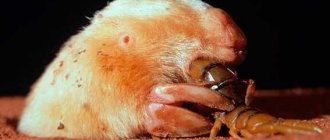A wide variety of creatures live in the depths of the water. In addition to colorful fish, there are strange creatures there. Sharks and rays are the closest relatives of the ancient inhabitants of the seas and oceans. Millions of years of evolution have made these animals different from each other. Today, stingrays represent a diverse group of marine inhabitants.
The nostrils are located on the lower part of the body
Read more: shark.
Description
The stingray has a flat, elliptical body shape that ends with a tail. The fused pectoral fins look like wings, as can be seen in the photo.
According to characteristics, the average size of the fish is up to 50 cm, but there are also large specimens that reach 1.2 m in length and weigh up to 100 kilograms. Convex eyes are clearly visible on the animal’s head, and vision is quite developed. The respiratory organs, the squirters, are located in the same place as the eyes of the stingray.
There are some species that lack vision. These are mainly deep-sea representatives. For them, this function is replaced by electroreception - the susceptibility of even weak electrical impulses that generate living organisms.
“The location of the visual organs physically does not allow the fish to see what it eats.”
The gills and mouth opening are located at the bottom of the body. During breathing, the squirts are involved in the flow of water to the gills, which exits through the gill slits. Breathing is thus determined by bottom dwelling. Swallowing water with its mouth, like a shark, various soil components and sand would affect the delicate respiratory organs. Accordingly, the intake occurs from above, and the water coming out through the gills disperses the sand, helping to search for prey.
The organs that generate electricity are located on both sides of the body in the interval from the head to the pectoral fins. These bodies are designed for effective self-defense and productive fishing. Discharges can be up to 220V. Find out other equally interesting facts about stingrays.
The color is largely influenced by the color palette of the immediate habitat. This can range from a discreet appearance to bright, fancy patterns.
The main function of the stingray's color is camouflage for catching prey or hiding from predators. Representatives of all species are solitary and can form groups solely for reproduction.
Features of character and lifestyle
Photo: What a stingray looks like
All stingrays are characterized by a solitary lifestyle. As mentioned above, they prefer to quietly spend the daytime, lying on the bottom or burying themselves in the sand. During moments of rest, they scan the surrounding area using electroreception, identifying potential prey or an enemy. Using the same method, they are able to communicate with each other, transmitting and picking up electrical signals, like bats.
This ability is well developed in all stingrays. Fish hunt and actively swim at night, it is then that they rely most on the perception of electrical signals, since even those whose vision is not reduced, it is not clear enough and cannot fully convey the whole picture of the environment, especially in the dark .
In the water column, stingrays move smoothly, as if floating in the water; unlike sharks, they do not need to scurry quickly to maintain breathing. Movement occurs due to synchronized flapping of the pectoral fins, or so-called wings. Thanks to their flat shape, they do not have to expend much effort to find their way through the water. Despite their slowness, stingrays are able to swim quickly, especially when escaping from a predator.
Some species have small pectoral fins and the fish move by pushing their powerful tail. Another method of movement is the sharp release of a stream of water from the nostrils located on the ventral side, which allows the stingray to make a circular movement in the water column. With this maneuver, he scares away potential predators, but if he approaches him, an additional protection becomes a discharge of electricity.
Animal or fish
Animals can be called all creatures that have a cell structure with heterotrophic nutrition, regardless of their habitat. In taxonomy, the taxon (group) “Animals” is one of the four kingdoms and the creatures included there are quite diverse.
Fish, in taxonomy, are a smaller group and there are fewer creatures included in it than in the animal kingdom. The characteristics that unite these creatures are much greater than those that unite into a kingdom. The main ones are:
- breathing through gills;
- aquatic habitat.
It turns out that from a biological point of view, stingrays are animals, and from a systematic point of view, they are fish. These two concepts are equally valid for them.
They lived at the same time as dinosaurs
In 2022, a team from the Institute of Paleontology at the University of Vienna discovered a fossilized stingray more than 50 million years old. The study provides new links to radiation caused by the effects of the Cretaceous mass extinction. Further molecular evidence suggests that modern rays diverged from their sister group during the Late Jurassic, about 150 million years ago. ()
Sebastian Condrea/Getty Images
Where do they live?
These are mainly bottom dwellers. Stingrays are settled where creatures from their main diet live, these are: bays, deep seas, on reefs, near sandy beaches. Some species dive to a depth of 1000 meters. The electric stingray fish is found in seas and oceans with tropical and temperate climate zones.
The geographical scope of their settlement is extensive. Due to its adaptability to a wide range of temperatures (from 3 to 35 degrees Celsius), it lives in almost all saline water basins on the globe.
“Some species even live in Arctic waters, where the water temperature is 1.5-2°C.”
Most stingrays have such a feature as inactivity. Some species of stingrays prefer to wait for prey by burying themselves in the sand and leaving only their eyes on the surface.
Another species settles on a rocky bottom or coral reef and blends into the terrain due to its perfect camouflage.
Home maintenance
Some small species of stingrays can be kept in an aquarium. The volume of the container must be at least 250 liters. For these inhabitants it is better to choose a horizontal dwelling. The bottom should be as free as possible so as not to interfere with the movement of the individual.
You can plant plants in the ground. The aquarium must be closed with a lid , as some individuals like to jump out of the water. They adapt to any water hardness, the main thing is not to change the parameters suddenly.
At home, the pet is fed lake bloodworms . It is first disinfected and frozen. Boiled shrimp are given as a treat. They are sold in grocery stores. They are first cleaned of their shell and legs. Large pieces should be torn into small pieces. It is acceptable to include soft squid and scallops in your diet.
Stingrays can be kept at home
For better formation of dental plates and cartilaginous skeleton, pollock fillet is given. It is a source of phosphorus.
You can try breeding stingrays at home. In males, paired genital organs in the form of tubercles are clearly visible on the lower part of the body. In the female they are in the form of tubes. It is better to place a couple of individuals in a separate aquarium. They are fed generously. Before the breeding process itself, food is not given for four days.
The male will begin to show interest in the female. He will start chasing her and swimming around her beautifully. Sexual intercourse lasts about three minutes. Pregnancy lasts about 20 weeks. Before giving birth, a female will notice a bulge on her lower body.
From one to twelve full-fledged cubs are born; it is better to transplant them into a separate aquarium. Juveniles are fed with tubifex, bloodworms, and small minced fish. They reach sexual maturity by one year of age.
Predator or not
This class of cartilaginous fish is classified as predatory, although it may not look like one. Sharks and rays have such a feature as the presence of 3-4 rows of teeth. Their diet may include both fresh meat and carrion. They get food using weapons given by nature, in this case electricity. Having caught up with the prey, the stingray covers it with its fins and releases a discharge, stunning it, after which it eats.
Feeding
Freshwater stingrays are carnivores, feeding primarily on fish and crustaceans in the wild. They are active fish with a high metabolic rate and therefore need to be fed at least twice a day.
They are also notorious gluttons and feeding them will cost you a significant amount of money. In general, an all-animal diet is preferred, although some may also take artificial foods.
Young individuals eat live or frozen bloodworms, tubifex, brine shrimp, shrimp meat, and the like. Adults should be fed larger foods such as whole mussels, clams, shrimp, squid, fingerlings (or other fresh fish) and earthworms.
A varied diet is necessary to keep the fish in the best condition. Once purchased they are often reluctant to eat and usually arrive in fairly poor condition. It is very important that they start eating as quickly as possible due to their fast metabolism. Bloodworms or earthworms (the latter can be cut into small pieces) are usually considered one of the best foods for the adaptation of newly acquired stingrays.
Rays should not eat mammalian meat such as beef heart or chicken. Some of the lipids contained in this meat cannot be properly absorbed by the fish and can cause excess fat deposits and even organ death. Likewise, there is little benefit in using forage fish such as guppies or small veiltails. Such feeding does not exclude the possible spread of diseases or parasites.
Structure
These creatures have certain structural features. Like sharks, rays are unusual bony fish. Thus, the skeleton of these fish consists entirely of cartilage - this explains the formation of a separate class and name for them. Since they do not have gill covers, the slits open into a separate opening. The diversity of structure can be observed in appearance. The body size varies from 10 centimeters to 10 meters with a mass of 10 tons.
Where are the eyes
In all species, the eyes are located on the upper part of the body. This anatomical feature causes mediocre vision in these fish. Eye size ranges from small to large. In the diet of these creatures, vision is not the leading organ.
“A species like the blind electric ray has its eyes completely covered by skin.”
Habitat in nature
This species is widespread in South America. It is found in Colombia, Peru, Bolivia, Brazil, Paraguay and Argentina. Inhabits both the Amazon and its tributaries: Orinoco, Rio Branco, Parana, Paraguay.
Like other representatives of the species, it is found in various biotopes. These are mainly sandbanks of large rivers and their tributaries, where the substrate consists of silt and sand. During the rainy season they move to flooded forests, and during the dry season to formed lakes.
It is worth noting that despite the popularity of the motoro ray in the aquarium hobby, there is still no sufficiently accurate classification of representatives of this family. New species that have not been described before are discovered periodically.
What does it eat?
They are predominantly nocturnal and prefer to feed in the dark. What stingrays feed on can be found in abundance in shallow waters or reefs, these are mollusks, small fish, arthropods, plankton, etc. Large individuals can prey on mullet, salmon and sardines. Stingrays have mouths that expand when they eat, this allows them to swallow fairly large catches.
Units
Most species of stingrays lead a bottom-dwelling lifestyle and feed on mollusks and crayfish. Pelagic species consume plankton and small fish. Let's figure out which groups scientists distinguish:
- electrical;
- sawfish;
- slope-shaped;
- tail-shaped.
Various types of stingrays can be found in various places around the globe. They are found in Antarctica and the Arctic Ocean. If you want to see a flying stingray with your own eyes, then go to the coast of Australia, there are more than enough of them. The most diverse types of stingrays, photos of which are presented in this article, fully reveal the entire history of their existence and modern life.
How are stingrays born?
These cartilaginous fish are dioecious. Their reproductive system has a complex structure. Stingrays can be viviparous, ovoviviparous, or ovoviviparous.
- Viviparous. All stages of development occur in the mother’s body, after which, as the name implies, a fully formed individual is born. Development and birth occur while being twisted into a tube. This is the only way they fit in the uterus. The stingray feeds the embryo through “villi”, through which the necessary substances are supplied.
- Ovoviviparous. When born using this method, the embryos located in the uterus are in a hard shell. The shell contains nutrients that are vital for the embryo and its development. The entire maturation stage takes place in the eggs. The female stingray protects and bears them until birth.
- Ovoparous. With this option, the female lays eggs, which are secured with the help of cords on parts of the substrate.
Hatched or recently born fish are quite ready to produce electricity. The offspring are perfectly adapted to survival, and, thanks to this, different species reproduce different numbers of embryos, but no more than 10. Stingrays have pronounced sexual dimorphism. Sexual maturity occurs when the fish grows to the required size. Certain species can breed when females reach 35-40 cm and males 20-30 cm.
Sea devil tastes good
They say that its meat is not only tasty, but also nutritious. In ancient literature you can find descriptions of recipes with sea devil. But hunting this stingray is far from safe and difficult. Due to its size, the sea devil can easily, for example, overturn a boat. And why kill this extraordinary creature of nature, especially considering the fact that the female brings only one cub. True, the size of the latter is very, very impressive, as is the weight, which on average at birth is ten kilograms.
Kinds
Stingrays, along with sharks, which are their close relatives, are the oldest animals inhabiting the aquatic kingdom. They belong to cartilaginous fish, the superorder of elasmobranchs, numbering 5 orders, as well as 15 families.
Scientists identify the following types of stingrays:
- tail-shaped;
- electrical;
- slope-shaped;
- Sawtooth-like.
“Any stingray is considered an electrical creature, since all of them can generate current. But only the sea stingray is capable of producing it with a voltage of 220 volts.”
These creatures, numbering 69 varieties, are grouped into the following families:
- bracken These are large creatures that live in the pelagic region. They can be found most often in the open waters of the seas. They prefer tropical waters. They move in waves by flapping their wings-fins;
- narcinaceae. Benthic, measured creatures. They can produce a current no more powerful than 40 volts. They are found in temperate latitudes, living in river mouths, sandy bays and reefs;
- nasal. There are forty species. They move slowly, often just lying on the bottom, buried in the sand. When prey swims nearby, the stingray stuns it and eats it;
- sawflies. There are 7 types. They have a shark tail and a certain external resemblance to the latter. They prefer tropical latitudes. Their main diet consists of schooling fish. They crash into the school and wield the saw like a sword, after which they pick up the remains from the bottom. Not dangerous to humans;
- stingrays. The body of these fish is completely covered with spines. At the end of the tail there are secretions that secrete poison, which is why a blow from the tail can be deadly. Having penetrated the body, the poison provokes tachycardia, reduces blood pressure, causes vomiting and leads to paralysis;
- guitar This species has a shark-like appearance, but the presence of gills makes them stingrays. Movement occurs with the help of the tail, like a shark. The diet includes shellfish and small fish. They attack their prey from above, pressing it to the bottom.
Food preferences
Just like most species of stingrays, the sea fox is a bottom-dwelling fish. She spends most of her life lying on the bottom, half buried in silt or sand. As a rule, this representative of diamond rays prefers shallow depths, but is capable of overcoming a depth of three hundred meters. In the Black Sea, it can be found at a depth of about one hundred meters.
The spiny stingray moves in a wave-like manner, bending its lateral fins. Such “fluttering-soaring” movements of its fins are very reminiscent of the movements that birds make when flapping their wings. That is why some species of stingrays received such sonorous names as “sea eagles” or “sea hawks”.
Sea Fox Smile
The stingray's mouth is located on the underside of its diamond-shaped body, and therefore, in order to catch moving prey, it needs to be directly above the potential victim. After this, the stingray suddenly “falls” from above and grabs the victim. The basis of the diet of sea foxes are bottom crustaceans (crabs, decapods), small species of fish, and sometimes mollusks.
How many volts does it produce?
The organs that produce electricity are similar to the human kidney. The stingray has two such organs. The current is produced through muscle contractions. The resulting energy is accumulated and stored in these two organs like a battery. The electricity itself can spread from the body itself, and not from some part of it, and can plunge the victim into a serious electric shock.
An adult stingray, also fully charged, creates an electric shock with a power of 220 volts. This force is enough to make an adult lose his balance, but not enough to kill. Although, if there are problems with internal organs, theoretically, a stingray with such power can kill. Death can also occur if a person or prey loses consciousness, is in shock or is injured and therefore is unable to move normally and, as a result, drowning.
The stingray uses its electrical capabilities only for protection or as a hunting weapon. These creatures seem to be slow or poor swimmers, but their lightning-fast short-distance dash allows them to quickly catch up with their prey and shock it. If he manages to get quite close to the fish, he wraps his wings around it before stunning it. This allows him to perform a series of electric shocks, which is guaranteed to kill the victim.
“In areas where stingrays are abundant, local residents use the fish to treat arthritis by giving them a series of shocks.”
The charge is formed due to muscle contractions, and the two organs that accumulate it can equal 20% of the entire mass of the stingray. Stingrays can be considered harmless to people, even friendly. If their meeting does occur, the fish creates a weak discharge as a warning. Scientists believe that they have 2 blows: a weak and short-lived one for warning and a powerful blow to kill the attacker or prey.
We select suitable neighbors
Any aquarist will agree that a couple of stingrays, even very large ones, for a half-ton aquarium is not a very good solution. Therefore, it is worth throwing other fish there to enliven the picture.
Which neighbors are suitable for an aquarium stingray?
In general, you can launch almost any large and medium-sized fish - but not too aggressive ones. Good choices would be discus, arowana, large barbs, most knives, shark catfish and loachfish.
All these fish are not too aggressive (although barbs can hardly be called particularly peaceful), so they will not cause unnecessary problems for the stingrays.
But the main inhabitants of the stingray may well perceive their small neighbors as food. This is worth remembering when choosing suitable fish.











